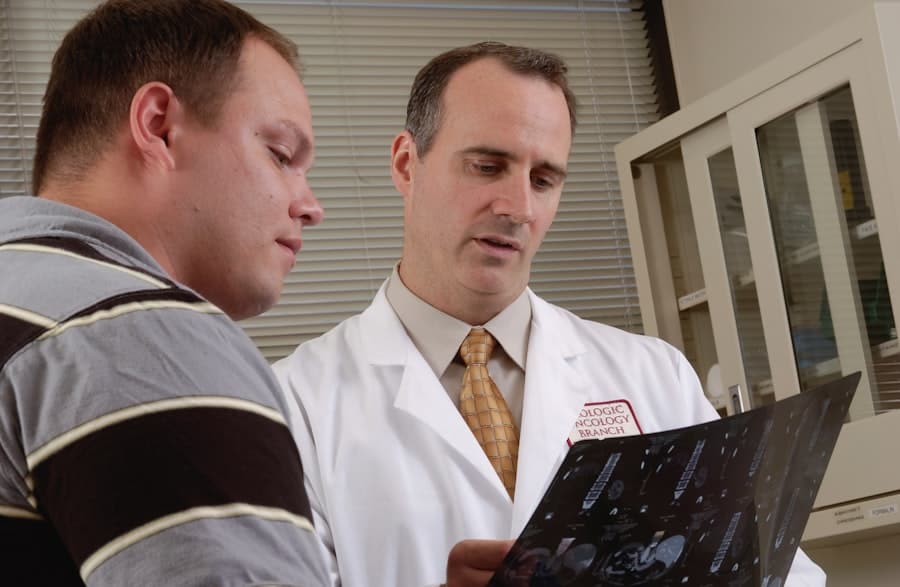Clinical research management software (CRMS) has emerged as a pivotal tool in the realm of clinical trials and research studies. As the complexity of clinical research continues to grow, driven by the need for more rigorous data collection, regulatory compliance, and patient engagement, the demand for sophisticated management solutions has surged. CRMS encompasses a range of functionalities designed to streamline the planning, execution, and monitoring of clinical trials.
This software not only aids in managing data but also enhances collaboration among stakeholders, including researchers, sponsors, and regulatory bodies. The evolution of clinical research has been marked by an increasing reliance on technology to facilitate processes that were once labor-intensive and prone to human error. Traditional methods of managing clinical trials often involved cumbersome paperwork and disjointed communication channels, leading to inefficiencies and delays.
In contrast, CRMS offers a centralized platform where all aspects of a clinical trial can be monitored and managed in real-time. This shift towards digital solutions is not merely a trend; it represents a fundamental transformation in how clinical research is conducted, ensuring that studies are completed more efficiently and with greater accuracy.
Key Takeaways
- Clinical research management software streamlines and automates various aspects of clinical research, from data collection to regulatory compliance.
- Using management software in clinical research can lead to improved efficiency, accuracy, and compliance, ultimately saving time and resources.
- Key features to look for in clinical research management software include electronic data capture, regulatory compliance tools, and integration with other systems.
- Case studies demonstrate the successful implementation of management software in clinical research, resulting in improved data quality and faster study timelines.
- Best practices for implementing and utilizing clinical research management software include thorough training, ongoing support, and regular updates to maximize its benefits.
Benefits of Using Management Software in Clinical Research
The advantages of employing clinical research management software are manifold, significantly impacting the efficiency and effectiveness of clinical trials. One of the primary benefits is enhanced data management. CRMS allows for the seamless collection, storage, and analysis of vast amounts of data generated during clinical trials.
By automating data entry and reducing manual processes, researchers can minimize errors and ensure that the data collected is both accurate and reliable. This is particularly crucial in clinical research, where data integrity is paramount for regulatory submissions and scientific validity. Another significant benefit is improved collaboration among stakeholders.
Clinical trials often involve multiple parties, including sponsors, investigators, and regulatory agencies. CRMS facilitates communication by providing a shared platform where all stakeholders can access real-time information about the trial’s progress. This transparency fosters collaboration and ensures that everyone involved is on the same page, reducing the likelihood of misunderstandings or miscommunications that could jeopardize the trial’s success.
Furthermore, with features such as task assignment and progress tracking, teams can work more cohesively towards common goals.
Features to Look for in Clinical Research Management Software

When selecting clinical research management software, it is essential to consider a variety of features that can enhance the functionality and usability of the system. One critical feature is electronic data capture (EDC), which allows for the efficient collection of data directly from study participants or clinical sites. EDC systems can streamline data entry processes and reduce the time spent on manual data collection, thus accelerating the overall research timeline.
Another important feature is compliance tracking capabilities. Given the stringent regulatory environment surrounding clinical research, it is vital for CRMS to include tools that help ensure adherence to guidelines set forth by organizations such as the FDA or EMThis may include automated alerts for protocol deviations or reminders for necessary documentation submissions. Additionally, robust reporting tools are essential for generating insights from collected data, allowing researchers to analyze trends and make informed decisions throughout the trial process.
User-friendliness is also a key consideration when evaluating CRMS options. A system that is intuitive and easy to navigate will facilitate quicker adoption among team members and reduce training time. Customization options can further enhance usability by allowing organizations to tailor the software to their specific needs and workflows.
Finally, integration capabilities with other systems—such as electronic health records (EHR) or laboratory information management systems (LIMS)—can significantly enhance the overall functionality of CRMS by creating a more cohesive ecosystem for managing clinical research.
Case Studies of Successful Implementation of Management Software in Clinical Research
| Case Study | Management Software Used | Key Metrics |
|---|---|---|
| ABC Hospital | Medidata Rave | 50% reduction in data entry errors |
| XYZ Research Center | Oracle Clinical | 30% increase in study participant recruitment |
| 123 Medical Institute | OpenClinica | 20% decrease in study monitoring time |
Numerous organizations have successfully implemented clinical research management software, leading to notable improvements in their trial processes. For instance, a prominent pharmaceutical company faced challenges in managing multiple concurrent clinical trials across various locations. By adopting a comprehensive CRMS solution, they were able to centralize their data management processes, resulting in a 30% reduction in time spent on data entry and monitoring activities.
The software’s real-time reporting capabilities allowed project managers to identify bottlenecks quickly and allocate resources more effectively. Another compelling case study involves a mid-sized biotechnology firm that struggled with compliance issues during their clinical trials. After implementing a CRMS with built-in compliance tracking features, they experienced a significant decrease in protocol deviations.
The software provided automated reminders for regulatory submissions and ensured that all necessary documentation was readily accessible during audits. As a result, the company not only improved its compliance rates but also enhanced its reputation among regulatory bodies, facilitating smoother interactions during future trials.
Best Practices for Implementing and Utilizing Clinical Research Management Software
To maximize the benefits of clinical research management software, organizations should adhere to best practices during implementation and utilization phases. First and foremost, it is crucial to involve key stakeholders from various departments early in the selection process. This collaborative approach ensures that the chosen software meets the diverse needs of all users, from data managers to clinical investigators.
Engaging end-users in discussions about their requirements can lead to better adoption rates and more effective use of the system. Training is another critical component of successful implementation. Comprehensive training programs should be developed to familiarize users with the software’s features and functionalities.
Ongoing support should also be provided to address any questions or challenges that may arise post-implementation. Additionally, organizations should establish clear protocols for data entry and management within the CRMS to maintain consistency and accuracy across all trials. Regularly reviewing and updating processes associated with the CRMS can further enhance its effectiveness.
As new features are released or as organizational needs evolve, it is essential to adapt workflows accordingly. Soliciting feedback from users can provide valuable insights into areas for improvement and help ensure that the software continues to meet the organization’s objectives.
Overcoming Challenges in Adopting Clinical Research Management Software

Despite the numerous benefits associated with clinical research management software, organizations may encounter challenges during adoption. One common hurdle is resistance to change among staff members accustomed to traditional methods of managing clinical trials. To address this issue, it is vital to communicate the advantages of the new system clearly and demonstrate how it will simplify their work processes rather than complicate them.
Another challenge lies in ensuring data security and compliance with regulations such as HIPAA or GDPR when utilizing cloud-based CRMS solutions. Organizations must conduct thorough due diligence when selecting a vendor to ensure that robust security measures are in place to protect sensitive patient information. This may include evaluating encryption protocols, access controls, and audit trails to ensure compliance with relevant regulations.
Integration with existing systems can also pose challenges during implementation. Organizations should assess their current technology landscape before adopting new software to identify potential compatibility issues. Working closely with IT teams during the integration process can help mitigate these challenges and ensure a smoother transition.
Future Trends in Clinical Research Management Software
The landscape of clinical research management software is continually evolving, driven by advancements in technology and changing industry needs. One notable trend is the increasing incorporation of artificial intelligence (AI) and machine learning (ML) into CRMS solutions. These technologies can enhance data analysis capabilities by identifying patterns and trends within large datasets that may not be immediately apparent to human researchers.
AI-driven analytics can also assist in patient recruitment by analyzing demographic data to identify suitable candidates for clinical trials. Another emerging trend is the growing emphasis on patient-centric approaches within clinical research management software. As patient engagement becomes increasingly important in trial design and execution, CRMS solutions are being developed with features that facilitate direct communication between researchers and participants.
This may include mobile applications that allow patients to report symptoms or side effects in real-time, thereby enhancing data collection while also improving patient satisfaction. Additionally, there is a shift towards more flexible and scalable CRMS solutions that can adapt to the unique needs of different organizations or trial types. Cloud-based platforms are gaining popularity due to their ability to provide real-time access to data from anywhere in the world while also offering scalability as organizations grow or take on new projects.
The Impact of Management Software on Optimizing Clinical Research
The integration of clinical research management software into the clinical trial process has fundamentally transformed how research is conducted across various sectors within healthcare. By streamlining data management, enhancing collaboration among stakeholders, and ensuring compliance with regulatory standards, CRMS has become an indispensable tool for researchers aiming to optimize their studies’ efficiency and effectiveness. As organizations continue to navigate an increasingly complex landscape of clinical research, leveraging advanced technologies such as AI and patient-centric features will be crucial for staying competitive.
The ongoing evolution of CRMS will undoubtedly play a significant role in shaping the future of clinical trials, ultimately leading to faster drug development timelines and improved patient outcomes across the board.



